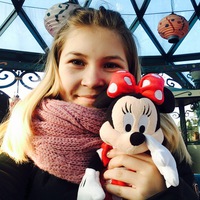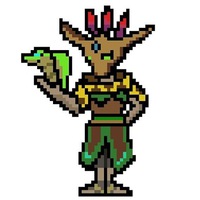
Назвать общие черты былины "Садко" с другими былинами
 0
0
 0
0
Ответы на вопрос
 Внимание! Ответы на вопросы дают живые люди. Они могут содержать ошибочную информацию, заблуждения, а также ответы могут быть сгенерированы нейросетями. Будьте внимательны. Если вы уверены, что ответ неверный, нажмите кнопку "Пожаловаться" под ответом.
Внимание! Ответы на вопросы дают живые люди. Они могут содержать ошибочную информацию, заблуждения, а также ответы могут быть сгенерированы нейросетями. Будьте внимательны. Если вы уверены, что ответ неверный, нажмите кнопку "Пожаловаться" под ответом.

Различия: Садко был музыкантом, гусляром, а Микула был трудягой-крестьянином, пахарем. Садко разбогател, благодаря морскому царю, а Микула — благодаря Вольге Святославовичу. Садко был умным и сообразительным, а также удачливым, а Микула был сильным физически, мужественным, храбрым.
ПОЖАЛУЙСТА ПОСТАВЬТЕ СТАТУС "ЛУЧШИЙ ОТВЕТ ".ИЗВИНЯЮСЬ ЗА КАПС
 0
0
 0
0

Common Features of the Epic "Sadko" and Other Epics
The epic poem "Sadko" is a well-known Russian bylina that tells the story of a merchant and adventurer named Sadko. While specific information about the common features of "Sadko" with other epics is limited, we can still discuss some general characteristics that are often found in epic poems. Please note that the following information is based on general knowledge of epic poetry and may not specifically apply to "Sadko" due to the limited search results available.
1. Heroic Protagonist: Like many other epics, "Sadko" likely features a heroic protagonist who embarks on a grand adventure or quest. The hero is often portrayed as brave, skilled, and possessing exceptional qualities that set them apart from ordinary individuals.
2. Supernatural Elements: Epics often incorporate supernatural elements such as gods, mythical creatures, and magical objects. These elements add a sense of wonder and fantasy to the narrative, making the story more captivating and larger than life.
3. Oral Tradition: Epics are typically part of an oral tradition, passed down through generations by word of mouth. This means that the poem may have undergone changes and adaptations over time, with different storytellers adding their own variations and interpretations.
4. Moral and Ethical Themes: Epics often explore moral and ethical themes, addressing questions of honor, loyalty, justice, and the consequences of one's actions. These themes provide a deeper layer of meaning to the story and offer insights into the values and beliefs of the culture from which the epic originates.
5. Length and Structure: Epics are typically long narrative poems that follow a specific structure. They often consist of multiple episodes or adventures that are interconnected and contribute to the overall plot. The poem may be divided into distinct sections or chapters, each focusing on a different aspect of the hero's journey.
6. Cultural Significance: Epics often hold significant cultural and historical value. They reflect the traditions, beliefs, and values of the society in which they originate, providing insights into the collective identity and heritage of a particular culture.
While these are general characteristics of epic poetry, it is important to note that each epic has its own unique elements and themes. Without specific information about the similarities between "Sadko" and other epics, it is challenging to provide a more detailed analysis. However, these general features can help us understand the broader context in which "Sadko" and other epics exist.
I hope this information helps! Let me know if you have any further questions.
 0
0
 0
0
Похожие вопросы
Топ вопросов за вчера в категории Литература
Последние заданные вопросы в категории Литература
-
Математика
-
Литература
-
Алгебра
-
Русский язык
-
Геометрия
-
Английский язык
-
Химия
-
Физика
-
Биология
-
Другие предметы
-
История
-
Обществознание
-
Окружающий мир
-
География
-
Українська мова
-
Информатика
-
Українська література
-
Қазақ тiлi
-
Экономика
-
Музыка
-
Право
-
Беларуская мова
-
Французский язык
-
Немецкий язык
-
МХК
-
ОБЖ
-
Психология
-
Физкультура и спорт
-
Астрономия
-
Кыргыз тили
-
Оʻzbek tili



























